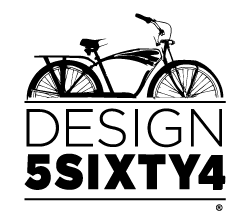 In today’s fast-paced world, creativity is often squeezed into the narrow gaps between endless tasks and responsibilities. And we’ve been feeling that fast-paced environment and “not enough time” for creativity—we’re also reminded of how important it is to create time and space for this subject matter. Carving out and building a structure for this intentional space for creativity and exploration can lead to profound personal and professional benefits. At Design5sixty4, we believe fostering an environment where creativity can thrive is essential for innovation and growth. Here’s why creating space for creativity and taking time for exploration is vital.
In today’s fast-paced world, creativity is often squeezed into the narrow gaps between endless tasks and responsibilities. And we’ve been feeling that fast-paced environment and “not enough time” for creativity—we’re also reminded of how important it is to create time and space for this subject matter. Carving out and building a structure for this intentional space for creativity and exploration can lead to profound personal and professional benefits. At Design5sixty4, we believe fostering an environment where creativity can thrive is essential for innovation and growth. Here’s why creating space for creativity and taking time for exploration is vital.
The Power of a Creative Environment
Creativity doesn’t just happen; it flourishes in an environment encouraging curiosity, play, and risk-taking. By setting aside specific times and spaces for creative endeavors, individuals and teams can unlock new ways of thinking and problem-solving. This intentional approach to creativity can lead to innovative ideas and solutions that might not emerge in a more rigid, task-oriented setting.
Benefits of Taking Time for Exploration
1. Enhanced Problem-Solving Skills:
Exploration allows us to approach problems from different angles. When we step away from conventional methods and allow ourselves to experiment, we can discover unique solutions that can risk being overlooked in a more structured environment.
2. Increased Innovation:
Innovation thrives on fresh ideas and perspectives. By dedicating time to exploring new concepts, materials, and techniques, we open ourselves up to a world of possibilities, leading to breakthrough innovations that set us apart from the competition.
3. Personal Growth and Fulfillment:
Engaging in creative activities can be deeply fulfilling. It allows us to express ourselves, discover new interests, and develop new skills. This personal growth can translate into increased confidence and motivation in both personal and professional realms.
4. Stress Reduction:
Creative activities can serve as a powerful outlet for stress. Whether painting, writing, or brainstorming new ideas, creating can be a form of meditation that helps clear the mind and reduce anxiety.
5. Building Resilience:
Exploration often involves trial and error. By embracing this process, we learn to cope with failure and setbacks, building resilience that can be applied to other areas of life. This resilience can be a crucial asset in today’s ever-changing world.
Strategies for Creating Space for Creativity
1. Designate a Creative Space:
Whether it’s a corner of your office or a dedicated room, having a physical space for creativity can help signal to your brain that it’s time to explore and innovate. Fill this space with inspiring materials and tools that encourage creative thinking.
2. Schedule Creative Time:
As you schedule a meeting or a workout, set aside specific times for creative activities. Depending on your schedule, this block could be a daily, weekly, or monthly practice. Lock it in—the key is consistency.
3. Encourage a Culture of Exploration:
If you’re in a leadership position, foster a culture that values creativity and exploration. Encourage your team to take risks, experiment, and share their ideas without fear of judgment.
4. Limit Distractions:
Creativity often requires deep focus. Minimize distractions during your creative time by turning off notifications, setting boundaries with colleagues or family, and creating a peaceful environment.
5. Embrace Play:
Creativity and play go hand in hand. Don’t be afraid to engage in playful activities that spark joy and curiosity, leading to unexpected and delightful creative outcomes.
Creating space for creativity and taking time for exploration is not a luxury; it’s necessary.
Creating space for these activities is necessary in a world that demands constant innovation and adaptability. By intentionally fostering an environment where creativity can thrive, we open ourselves to many benefits, from enhanced problem-solving skills to increased personal fulfillment. At Design5sixty4, we encourage you to prioritize creativity and watch as it transforms your work and life in remarkable ways. And you’ll find, as we often remind ourselves when we’re in the midst of it; you won’t regret it.
How are you creating space for creativity?
